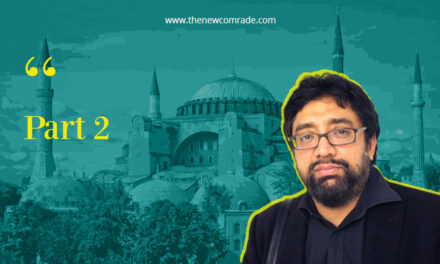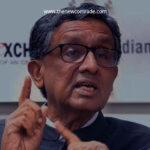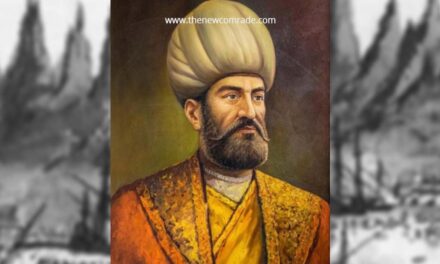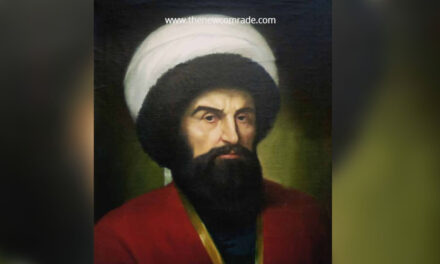
From British Raj to Ram Raj: Heeding Jinnah’s Warning

Ram Raj
The idea of Ram Raj or the rule of Ram was central to Gandhi—he died with Ram’s name on his lips. It was central to larger Hindu historical mythology as an ideal, a golden age. But Gandhi helped convert the notion from culture to politics, from private belief to public policy. To him, independence meant swaraj, a Vedic term implying a reversion to Ram Raj (see also Chapter 8 ‘From British Raj to Ram Raj’).
Lord Ram in Hindu mythology is a noble figure embodying bravery, generosity, and compassion (for a discussion of the impact of Ram on the politics of contemporary India through the media, see Chapter 8 ‘Lord Ram as media superstar’). In the stories, he vanquishes Ravana, the symbol of evil. So popular is Ram that even Iqbal dedicated a poem to him. His reign—Ram Raj—meant a time of justice and prosperity. It was an attractive idea to strive towards and provided a strong rallying point for modern Hindu nationalism.
But it had a dark side; it also meant the suppression of both the non-Hindu minorities and the lower castes. Ram ultimately symbolized the rule of the upper castes in Hindu society. This was a paradox, as there are episodes in the Ramayana in which Ram transcends caste discrimination, indeed pointedly embracing those of the lower castes. However, his critics relate the story of his killing Sambhok, a member of the lower caste, to show him his place in society.
In the south of India, where there is a developed consciousness against caste, Ram is not seen as a heroic figure. Many tribals and Dalits have taken up Ravana’s cause. He, not Ram, is their hero. Indeed, in many areas, they burn effigies of Ram (Times of India, 21 October 1989, bonfire at all 1994:199; for the dalit position, see rajshekhar 1993; 81).
From British Raj to Ram Raj
It had taken over half a century from the time when Jinnah warned that the British Raj would be replaced by Ram Raj, that Muslims—and Christians and Dalits—would be vulnerable to communal violence and become a second-rate citizenry. But it had happened.
Since Independence, a central debate has enveloped India: whether homogeneity or a looser, plural society should prevail. From the time of Nehru, with his belief in a strong socialist centre, Delhi has attempted to steamroll the diversity and color of the hundreds of different customs, languages, and administrative organizations in the land. To an extent, it has succeeded; by the 1990s, one language, Hindi, one religion, Hinduism, and one people, the Hindus, have by and large emerged to dominate India (one economy is in the process of being abandoned) but at a cost.
The BJP, along with the Congress, is one of the two largest parties in the Parliament. It insists that all those who live in India must demonstrate loyalty to the land and therefore accept Hinduism; Muslims would thus become something the BJP calls ‘Hindu Muhammadans’. But it is not a simple Hindu-versus-Muslim clash. The Sikhs have also been ‘taught a lesson’ during the last decade. Christians have been persecuted, and nuns raped. The so-called lower castes among the Hindus are still subject to humiliation and injustice.
Although Muslims are singled out, even Jains and Buddhists are not spared: ‘Indian Christians are condemned for allegedly preferring the English language, instead of Sanskrit or Hindi. Jainism and Buddhism also come in for denigration: “they have never made any contribution to economic and philosophical thought as such” (Basu et al. 1993-28).
Yoga abstention from alcohol, a universal caring for humanity, the notions of duty and respect for tradition: these were the positive aspects of Hinduism, something Hinduism has given to the world (see Madan 1987, 1992, 1994). But the transformation of what its devout and thoughtful followers see as a humane and universal religious tradition to a vehicle for ethnic hatred and political confrontation saddles many Hindus. Hindus themselves are aware of this predicament. Indeed, Rajmohan Gandhi, grandson of the Mahatma, in a dialogue with me organized by the Indian Express in Delhi commented on the decline. ‘After some years, looking back on the present moment, many Hindus will feel angry and ashamed’ (Indian Express Sunday Magazine, 27 September 1992). ‘Hinduism,’ he remarked sadly, ‘has now been hijacked by the fundamentalists’.
In the summer of 1995, a controversy started when Ashok Row Kavi described Gandhi as a ‘bastard Bania’ on Nikki Bedi’s popular television show, Nicky Tonight (Guardian, 5 July 1995). The reaction was significant. There was no public outcry. Gandhi was more respected internationally than at home; he had brought the nation pride and identity abroad but was reduced in contemporary India to an attractive idea, little more. Gopal Godse, brother of Gandhi’s assassin, Nathuram Godse, openly terms Gandhi a ‘bloodsucker’, a ‘fanatic’ who betrayed the ‘Hindu’ cause. He was not the ‘father of the nation’ but the ‘father of Pakistan’. Godse demanded that what is now Pakistan and Bangladesh must return to Akhand Bharat—that is, reunite with India (Times of India, 19 November 1993; Bonner et al. 1994:2).
During 1947, Nehru complained that ’emotion and sentimentality have taken the place of reasoned thought and enquiry’ (1961:543). “All of us,” Nehru wrote, “seem to be getting infected with the refugee mentality or worse still the RSS mentality. That is a curious finale to our careers”. But he realized that this communal feeling, if allowed to spread, would wreck India and destroy its future, and combating it became his prime task (Gopal 1991:15).
Fine words, but on extremism Nehru fudged. While formally denouncing communalism, he allowed Hindu communalists to organize functions and even patronized them. Quite early after independence, he allowed them to commemorate Somnath by rebuilding the temple where almost a thousand years ago Mahmud of Ghazni had defeated the Hindus. Gandhi had already blessed the project before his death. The Somnath celebration generated the same kind of charged atmosphere created by the Ayodhya crisis. Nehru also failed to oppose the universal ban on cow slaughter, which was one of the directive principles of State Policy, even though Muslims saw this as a concession to Hindu bigotry. Mainly Hindu communalists in the administration, active in their belief, were ignored by Nehru.
For instance, after partition K.K. Nair, deputy commissioner at Ayodhya, was an RSS member. Babri Masjid at Ayodhya was quietly occupied by Hindus. But Nair’s links were kept a secret, and he was directly transferred (Bonner et al: 1994:104). The roots of the explosion at Ayodhya in 1992 were nourished by people like Nair. Nehru also allowed RSS contingents in full military uniform to take part in National Independence Day parades in Delhi (for example in 1963).
The mood after partition had created a general climate of distrust and hatred for Muslims in general and for those who stood up for their rights in particular. Muslims were associated with Pakistan, Pakistan rankled, as Golwalkar makes clear: “There are those who tell us: ‘Bygones are bygones. What is the use of raking up dead issues? After all, partition is now a settled fact.’ How is this ever possible? How can a son forget and sit idle when the sight of his mutilated mother stares him in the face every day? Forget? No son can ever forget or rest till she becomes once again her complete whole. If partition is a settled fact, We are here to unsettle it” (Golwalkar 1996:91-3).
Every Muslim is regarded as a Pakistani at heart. Those Muslims who talk of rights for their community—even a member of parliament like Shahabuddin—are dubbed a ‘second Jinnah’ as we saw above (Rajshekhar 1993:48). Bal Thackeray, in fact, had said: ‘If I come to power in the centre, I would give 48 hours’ notice to Muslims, and (solemnly) I will tell them: prove that you belong to this country. You can’t remain here bodily if your mind and heart are in Pakistan’ (Thackeray in Muslims in India, June 1984:155).
Sometimes this paranoia about Pakistan assumes absurd proportions. When a stalker began killing children in India’s Uttar Pradesh state, referred to a strange and frightening pig-faced monster which could jump 25 meters in one leap. Thirty children had been attacked by the middle of 1996, and 17 died of their injuries. Parents lived in fear. People immediately blamed Pakistanis (Time Magazine, ‘Talk of the Streets,’ 15 July 1996).
The wars between India and Pakistan were not only fought on the battlefield. The cricket ground, for example, was seen by both Pakistan and India as an extension of the confrontation. Imran Khan’s greatest ambition, said in public, was to defeat India in India; this made him a national hero in Pakistan. It made him something of a star attraction in India too because he fitted the Muslim stereotype—bold and brash. But the Muslims of India cheering him and his team antagonized the Hindus, who considered this to be evidence of disloyalty. Muslims were failing the cricket test.
The idea of the cricket test came from a statement made by the British conservative MP and former cabinet minister Norman Tebbit in an interview with the Los Angeles Times in April 1990, the night before British MPs voted on whether to issue UK passports to Hong Kong citizens (which he was against). Tebbit, in what he called a ‘lighthearted way’ of finding out how much Asian immigrants genuinely integrated into British society, suggested they be asked: would you cheer for the English team or for the Indian or Pakistani team? It was an easy test to fail, and many from India and Pakistan in Britain failed it. But in India, failure meant riots, houses burned, torture, death, and rape.
Bal Thackeray, who insisted on the cricket test, asked: ‘But when Pakistan wins and my country is defeated, why should Muslims crack crackers? Why should they have that jubilation mood?… They should shed tears for our country. That should be the spirit’ (Muslim India, June 1984).
(Excerpt from the book Jinnah, Pakistan and Islamic Identity: The Search for Saladin by Akbar Ahmed)
Author Profile

Akbar S. Ahmed
SIS Professor, Ibn Khaldun Chair of Islamic Studies at American University and former Pakistani High Commissioner to the UK and Ireland. Wilson Center Global Fellow.















